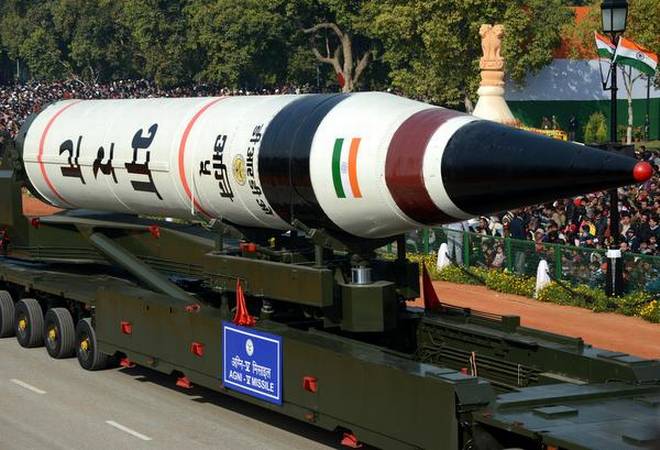Sunday the 3rd of June provided a big boost to India’s defence forces with the sixth successful test launch of Agni V. The test was conducted from Dr Abdul Kalam Island which is located approximately 150 kilometres from state capital Bhubaneshwar. Agni V is an intercontinental ballistic missile developed indigenously by the Defence Research and Development Organisation (DRDO). Five prior tests conducted on Agni-V had all been successful as well. Agni V, when deployed, will greatly enhance the Missile range of India, increasing it to 5,000 kms. According to Chinese researcher at PLA Academy of Military Sciences, Du Wenlong, the Agni V missile has an effective range of around 8,000 kilometres. The Indian officials too have downplayed the operational range to 5,000 kms and have remained tight lipped about the full capacity of the missile. The sixth testing of Agni V has proved that it is efficient and precise and will provide the much needed nuclear deterrence against China. Even if the Indian authorities are to be believed about the range not exceeding 5,000 kms, it is enough to target all the parts of China and most of the parts of Europe as well.
Agni-V missile has many advantages over its predecessors, over and above the exceeded range of the missile, it is also a solid-fueled missile. Solid fueled missiles are easy to transport and can be quickly readied for a launch as compared to a liquid fueled one. With Agni V, India has now mated the missiles with nuclear warheads before loading them into mobile launchers. All Agni V missiles will have nuclear warheads pre-mated in the production stages. It is different from the earlier Agni-1 to Agni-IV systems which had to be mated with nuclear warheads prior to launch. The previous three tests of the Agni V have been conducted using the canisterised system. Canisterisation allows the missile to be always ready and greatly reduces the efforts needed in camouflaging. Canisterisation also allows greater mobility of the missile system and will prove helpful in moving the missile through rail-road network.
The successful completion of tests of Agni V has advanced India’s capability to develop anti-satellite missile weapons. India has remained adamant against the weaponisation of space, but China has been moving in this direction for many years. India could easily build upon the Agni V model to develop ASAT weapons which could be used if India’s satellites in the space are threatened by enemies. The Agni V missile system will also feature a Multiple Independently Targetable Re-entry Vehicles (MIRVs) in the time to come. MIRVs will be used to carry and target 2-10 separate nuclear warheads. This ensures a credible second strike capability even with fewer missiles.
Dr APJ Abdul Kalam Island became witness to what is probably the biggest development in India’s defence system in the modern times. It is a symbolic tribute to our ex-President and the ‘Missile Man’ of India. This giant leap ahead puts us in elite circles which have intercontinental missile systems, capable of targeting even Europe if and when the need arises. DRDO and other wings of the government which have played an active role in the development of Agni-V should be praised for this achievement. Congratulations to the NDA government and Army are well in order for this game changing development and successful testing of the missile system. Agni-V has restored the balance of power in the globe and as Indians we all should be proud of that.
